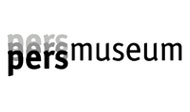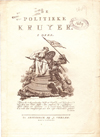1700-1800: Subdued freedom II
The Dutch Republic and the printing city of Amsterdam
In the 18th century, infringements of censorship laws continued to be the order of the day, witness the stream of edicts in which publications in print, including newspapers, were subjected to restrictions by the national, regional and local authorities. Clearly the law was not being observed. Besides the dissemination of news that was viewed as harmful to the security of the state and religious conformity, books, pamphlets and newspapers also commented on current affairs, which led to new clashes with the various authorities.
The many contraventions are also reflected in the prosecution and conviction of authors, printers and booksellers. One of the best-known victims was Jacob Campo Weyerman, who in 1739 was sentenced to life imprisonment and subsequently died in prison.
In years of political unrest, such as during the Patriot Revolt (1780-1787) and its aftermath, there was a flood of censorship legislation, bans and prosecutions.
Actual executioners were regularly given the task of burning books and journals. But in the 18th century too, being banned amounted to excellent advertising. Copies of outlawed printed works, if they were not seized and/or burned, sold like hot cakes over the counter - or usually under it - and sometimes large sums were paid for them. In 1798, during the Batavian Republic, the Netherlands gained its first written constitution which also provided for the freedom of the press.
As in the 17th century, the Dutch Republic of the 18th century was a relative safe haven for foreign texts that could not be printed in the country of origin. These included, for example, works by famous French such as Voltaire and Jean-Jacques Rousseau.
Gradually the Republic came to share its exceptional status as a relative safe haven with England and in later years with the United States and with France. Thanks in part to the American, French and Batavian revolutions, other countries too began to adopt milder censorship legislation. The Dutch Republic no longer formed an exception to the rule.


















